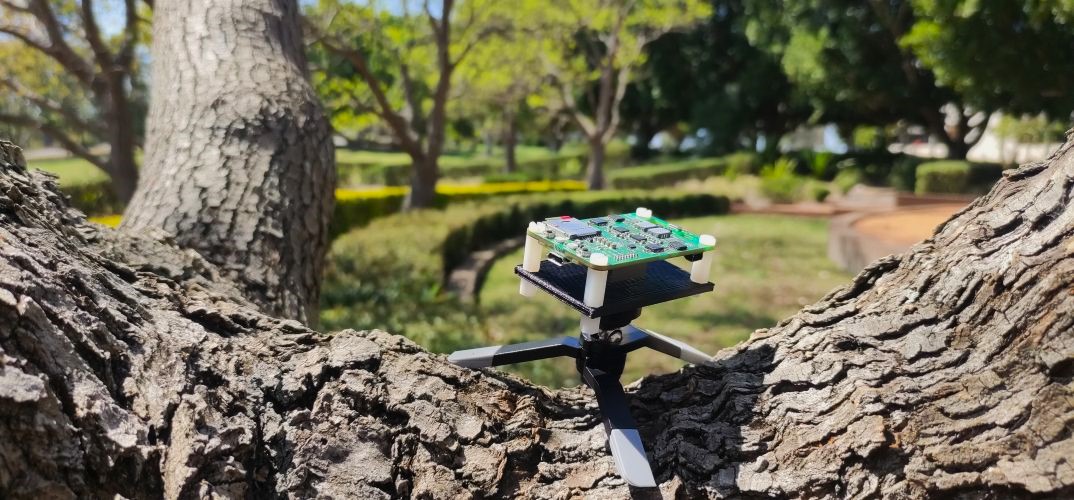Scientists create portable, miniature high-speed ‘electronic nose’ that outperforms mice

A group of scientists led by University of Hertfordshire researchers have collaborated to create a particularly fast and small ‘electronic nose’.
The device, roughly the size of a credit card, works at unprecedented timescales, as it can identify odours within mere tens of milliseconds and decode rapid odour fluctuations approaching the speed at which mice perform similar tasks.
The University of Hertfordshire has led the work, which also involves researchers from University College London, the Francis Crick Institute and Western Sydney University (Australia).
It has already been proven that mice can reliably distinguish between different temporal structures of odour pairs up to frequencies of 40 Hertz. This is important for their survival, because it allows them to distinguish between odour sources that are in close proximity against those that are separated. These timescales have not hitherto been matched in robotic systems.
In a series of experiments, the researchers tested their electronic nose on a range of stimuli, including short pulses of odorants for pineapple, banana, eucalyptus and cheese. When compared to the performance of mice in distinguishing rapidly switching odours, the electronic nose outperformed them.
The activity of the sensors inside the device provides a nuanced ‘map’, which can help to detect different gases, smoke, explosives and a range of other odours. As the device is fast, it could be used for robot-assisted monitoring campaigns. This could include use in industrial and environmental settings.
Nik Dennler, a recent PhD graduate in Neuromorphic Computing and Sensing at the University of Hertfordshire and the Western Sydney University (Australia), and Professor Michael Schmuker, a pioneer in neuromorphic olfaction at Herts, explained:
“Existing solutions for artificial olfaction devices have been either slow, bulky, expensive or power-intensive. This has made real-world application very limited. Our work is significant because it overcomes all these challenges.
“A key part of the challenge has been temperature control. The sensor reaction depends strongly on heat, which is difficult to control in a turbulent environment. We have assembled electronics and devised algorithms that rapidly control the operating temperature. This allows the sensors to work with incredible precision.”
Dennler added,
“A wide range of applications may be possible for the electronic nose. We regard the field of robotics as particularly promising. Many odour-based monitoring scenarios could benefit from a mobile platform, such as a drone or a robot. Think for example about localising gas leaks, monitoring wildfires, or finding explosive materials, all based on the odour. To become feasible, this requires high sensing speed, which we demonstrate in our work.
“Further, the design will likely find usage in neuromorphic computing and sensing, an emerging technology that takes inspiration from the brain to achieve low-power and low-latency artificial intelligence.”
Their research concludes that, “This study marks a groundbreaking advancement in electronic olfaction systems, demonstrating the ability to discern odours and decode odour patterns with unprecedented temporal precision in miniaturised low-power settings.”
Read the full research which has just been published in Science Advances: “High-speed odor sensing using miniaturized electronic nose".